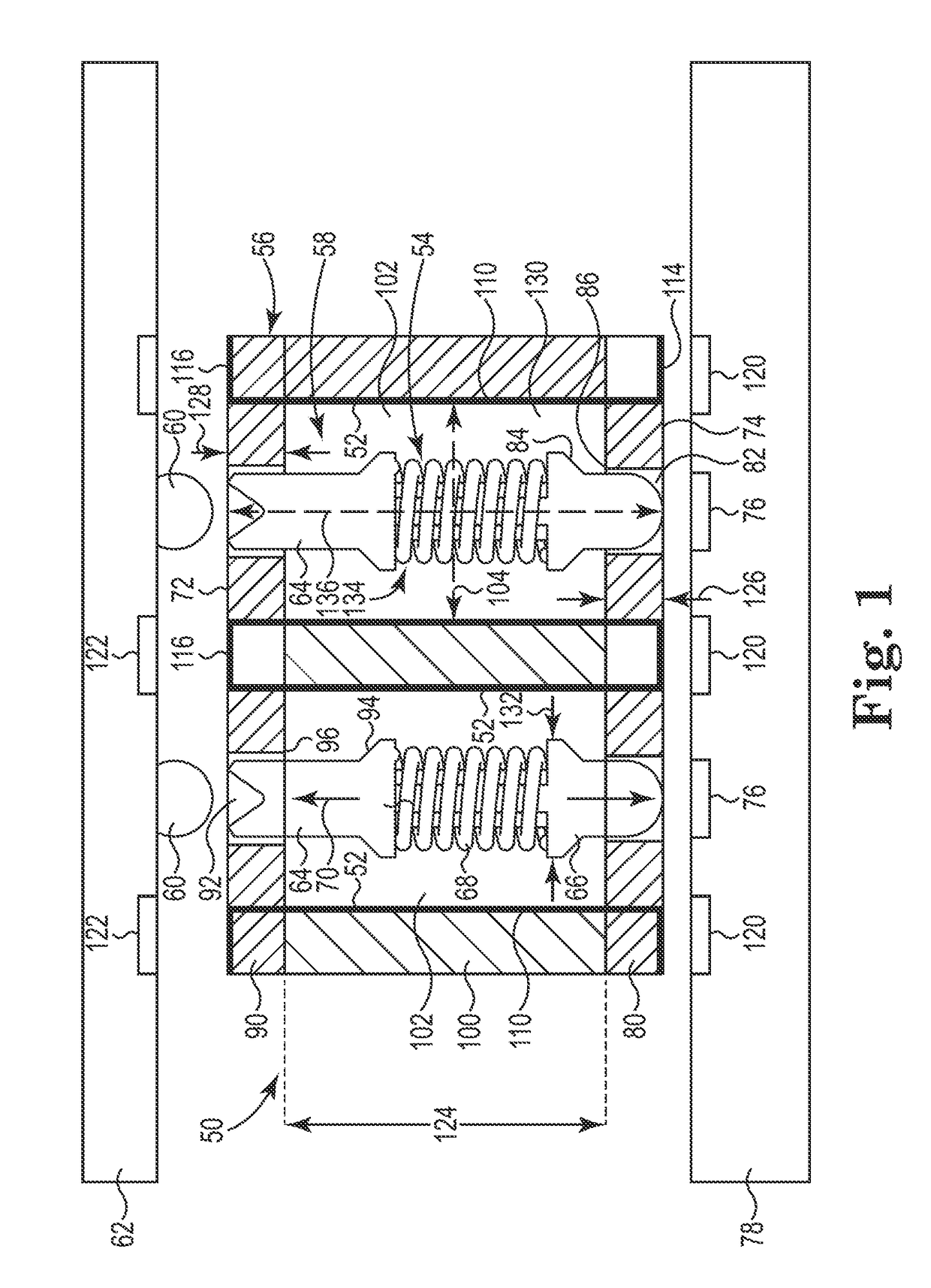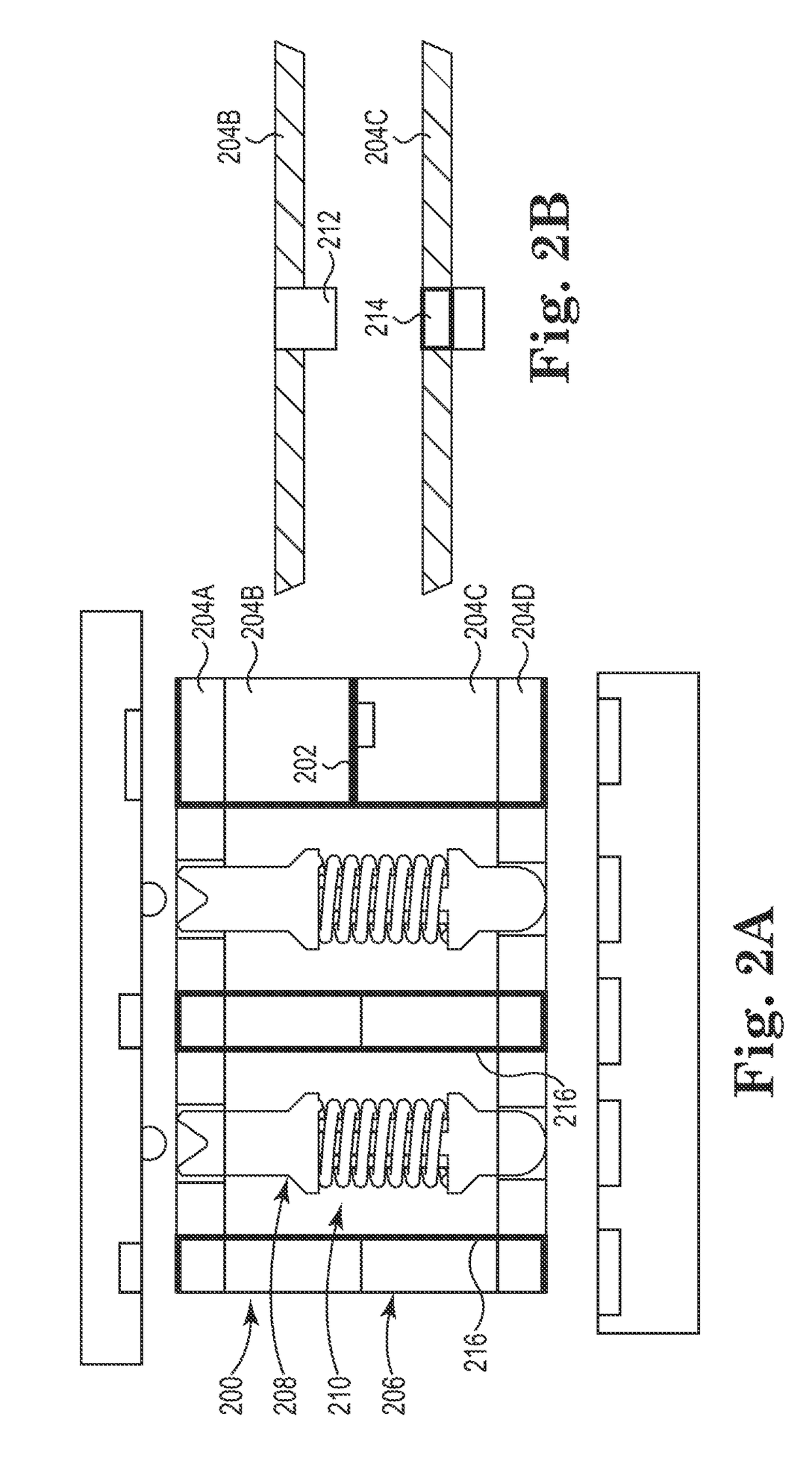Performance enhanced semiconductor socket
a technology of semiconductor sockets and sockets, applied in the direction of measurement devices, electrical measurement instrument details, instruments, etc., can solve the problems of reducing the space available for locating springs or contact members, ic sockets have reached mechanical and electrical limitations that require alternate methods, etc., to achieve reliable elastic deformation or compliance properties.
- Summary
- Abstract
- Description
- Claims
- Application Information
AI Technical Summary
Benefits of technology
Problems solved by technology
Method used
Image
Examples
Embodiment Construction
[0034]FIG. 1 is a sectional view of a test socket 50 with contact members 54 in accordance with an embodiment of the present disclosure. Socket housing 56 includes a plurality of openings 58 arranged to correspond with contacts 60 on integrated circuit device 62. In the illustrated embodiment, the contacts 60 are solder balls.
[0035]In the illustrated embodiment, the contact members 54 are spring contact members that provide superior mechanical performance in forming electrical connections with IC devices 62 and PCB 78. In one embodiment, shielding 52 surrounds the contact members 54. The spring contact members 54 are of a conventional structure with an upper portion 64 that slides axially relative to lower portion 66. Spring member 68 biases the upper portion 64 away from the lower portion 66 along axis 70. In application, upper portion 66 extends above top surface 72 of the socket housing 56 to engage with contact members 60 on the IC device 62. Simultaneously, lower portion 66 ext...
PUM
| Property | Measurement | Unit |
|---|---|---|
| dielectric constants | aaaaa | aaaaa |
| dielectric constant | aaaaa | aaaaa |
| dielectric constant | aaaaa | aaaaa |
Abstract
Description
Claims
Application Information
 Login to view more
Login to view more - R&D Engineer
- R&D Manager
- IP Professional
- Industry Leading Data Capabilities
- Powerful AI technology
- Patent DNA Extraction
Browse by: Latest US Patents, China's latest patents, Technical Efficacy Thesaurus, Application Domain, Technology Topic.
© 2024 PatSnap. All rights reserved.Legal|Privacy policy|Modern Slavery Act Transparency Statement|Sitemap



